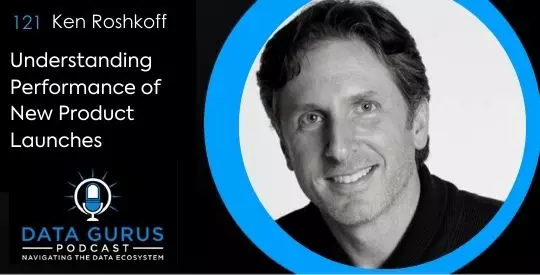Podcast: Play in new window | Download
I am happy to welcome Ken Roshkoff, the CEO of AMC Global, as my guest for today.
Ken’s father started AMC Global
Ken’s father started their company in 1979. He was a true researcher who loved working with data, doing analytics, and working with project staff.
The competitive component
Ken always loved the competitive component, so he spent much of his childhood focused on sports. He loved tournaments and competing, so he knew that he would eventually embark on a career with competitive elements.
Getting involved with AMC
When Ken initially got involved with AMC, his father started training him to crunch the numbers and become an expert in running projects. However, Ken quickly realized that was not going to be his thing. He felt that for him to be excited about what he was doing, he had to bring his clients into a space that would be more interesting to him.
Giving the business another shot
After less than a year, Ken left the business to go to grad school to get an MBA. Coming out of that, he decided to give the business another shot. He wanted to do things a little differently, however.
A unique methodology
Given his interest in CPG, he identified an opportunity in product launch tracking. In around 1991, he developed a unique positioning and created and patented a unique methodology that would help major CPG companies capture robust insights from the purchasers of the products in the market. That program became known as PFU (Purchaser Follow Up).
Marketing the PFU program
Ken then began actively marketing the PFU program to CPG companies. He created a niche. Then he leveraged it to form relationships with some of the largest CPG companies in the world.
Working at all stages of the product life cycle
AMC does work at all stages of the product life cycle.
Where the program fits
Ken’s program fits between pre-launch and post-launch work.
The launch phase
The issue for many of Ken’s clients is that they were not getting reliable repeat information until six months, or longer, into the launch. Ken’s launch phase starts from day one of the launches and runs throughout the first three to six months.
A robust way to capture insights
He developed the PFU program as a robust way to capture insights, both qualitative and quantitative, from the very first purchasers of new products. Then they track those consumers to understand how well the products fit into their lifestyle if they are re-purchasing, and if not, why not.
What the PFU program involves
The PFU program works by placing an invitation in or on a package, in a slightly disguised way because it is not meant to be a purchase driver. Ken wants people to find the invitation when they get the product home and use it. When they open the product, they typically find an offer for a prepaid cash card.
A built-in usage period
They build in a usage period. So after the extended usage period, they send the purchasers a cash card with instructions for how to activate it by doing a phase-two survey. It is a bit like an in-market home-use test, and it is flexible. And it can get used globally.
The beauty of the system
As long as the product sells, they can provide their clients with top-line information at any point during the project.
Trends related to launching new products
Lately, Ken has been seeing a lot of companies shortening the pre-launch process. And that makes the launch-phase tracking that Ken does even more important.
Historical product launch data base
Ken uses his historical database to benchmark new products against other similar test products that they have tracked for other clients.
Post-launch activities
They also do a lot of the more traditional brand health tracking for their clients. Once the products are out there for a longer time, in addition to using more traditional panel-based systems, they also leverage the database they developed from using the PFU program during the launch phase so that they can go back to those consumers and do further testing at different stages of the product life cycle.
A good time to get new products out there
Since Covid, sales have gone crazy for a lot of Ken’s clients in the CPG space. As a result, he has seen that a lot of his clients pushing ahead with new launches. It has been a good time to get some new products out there into the retail space.
The team
In Ken’s type of business, you need to assemble the right kind of team to grow. Ken’s team is his number one asset, so he is cautious about who he brings onto the team. Those people need to be innovative, a fit for the culture, and a fit for their clients.
The future
Going forward Ken wants to offer the highest quality to their clients and collect solid researchers along the way. He wants to train his juniors up to be the next generation of best researchers in the industry and have structured growth over time.
Ken’s quotes:
“We developed the PFU program as a robust way to capture insights, both qualitative and quantitative, from the very first purchasers of new products.”
“As a result of all the video conferencing, I feel like we’ve got stronger relationships with our staff and our clients.”
“I grew up around market research.”
“I always loved the competitive component.”
“I developed a unique positioning and I created and patented a unique methodology that would help major CPG companies capture robust insights from the purchasers of the products in the market.”
Links:
Email me your thoughts!
Sponsors:
The In-Person Qualitative Collective




